I started writing this post in Rome, where I had to go and visit the Australian Embassy to cast a vote in the forthcoming federal election. We decided to make a trip of it and chose a place to stay in walking distance of the embassy, near the Piazza Bologna metro station.
On previous visits to Rome we have always stayed in the Centro Storico, but this time we had a car with us and we didn’t want to go anywhere near the dreaded Zona Traffico Limitato (ZTL) – the permit zone that can see hapless tourists cop several expensive fines within a few minutes as they desperately try and find a way out. We too have had the unpleasant experience of finding ourselves in a one-way street, surrounded by surging traffic, being swept inexorably into the ZTL. In that case we got away with it – maybe because it was during one of the short periods that the ZTL does not operate, or maybe the camera was not working. But I wouldn’t want to repeat it, so we chose somewhere at a safe distance.
The area near the Piazza Bologna is called Nomentana (named after a gate in the late Roman-era city wall) and turned out to be a cheerful bustling district with much to recommend it, not least a Sicilian cafe called Mizzica where we had a cheap but excellent breakfast both mornings, of coffee and Sicilian pastries. Learning to eat the latter without getting sticky sweet mascarpone all over my chin remains a work in progress. In the evening we went back for aperitivi and snacks, sitting at a table outside and watching the world go by.
A bit further away we tried a restaurant recommended to us by the hotel, called Hostaria “Al Monumento” da Giulio which promised typical Roman cuisine. Going by the presence of tripe on the menu, this was probably true, as Romans are great offal-eaters. There were however other options, and it being spring, I had Carciofi alla Giudia which is Jewish-style deep-fried artichoke. Lou had abbacchio which is roasted milk-fed lamb.
Being close to a metro station it was fairly simple to get into the centre of Rome, which was its usual self, heaving with tourists and touts. In the evenings, we found we preferred just hanging around Nomentana, where the voices around us were mostly speaking Italian, rather than – as they would have been in central Rome – Mandarin, Japanese, German, Dutch, or variants of English.
The next morning we travelled in to Termini to visit a nearby museum called Museo Romana Palazzo Massimo alle Terme. The terme in question are the baths of Diocletian, close by.
Rome, not surprisingly, has a lot of museums. I do my best, but I have to confess that my heart sinks a bit when we turn a corner and see yet another corridor lined with several dozen marble busts, all helpfully labelled either Portrait of a Man or Portrait of a Woman (gosh thanks, I would never have guessed). I usually manage to give the first few a conscientious examination, after which it all becomes increasingly cursory. Strange – if any one of them were the only surviving example, one would sit and stare at it for hours.
The reason we were going to this museum is that it offers more than statuary – it features mosaic floors and, even better, frescoed walls from various excavated buildings.
I always find it a bit miraculous when I see a surviving fresco from ancient times – plaster being inherently brittle and friable – but I must admit that when good conditions and good luck combine, the results can be startling, especially in the case of some Etruscan tombs.
One of the highlights of the museum is a set of restored frescoes recovered from a Roman villa near the site of the existing Villa Farnesina on the western bank of the Tiber between the Gianicolo and Trastevere areas of Rome. Then as now in a very desirable area, the villa may have been built by Octavius (later the Emperor Augustus) for his daughter Julia, and was abandoned at some point due to flooding from the river. It was buried and forgotten for centuries until rediscovered at the end of the 19th Century when the modern river embankments were being built. The frescoes are displayed in representations of the original rooms.
I regret that the only photos taken in the museum were taken on our smartphones – museums in Rome usually insist on bags of any size going into a cloakroom and I was reluctant to risk my Hasselblad equipment in there, so I didn’t take it.
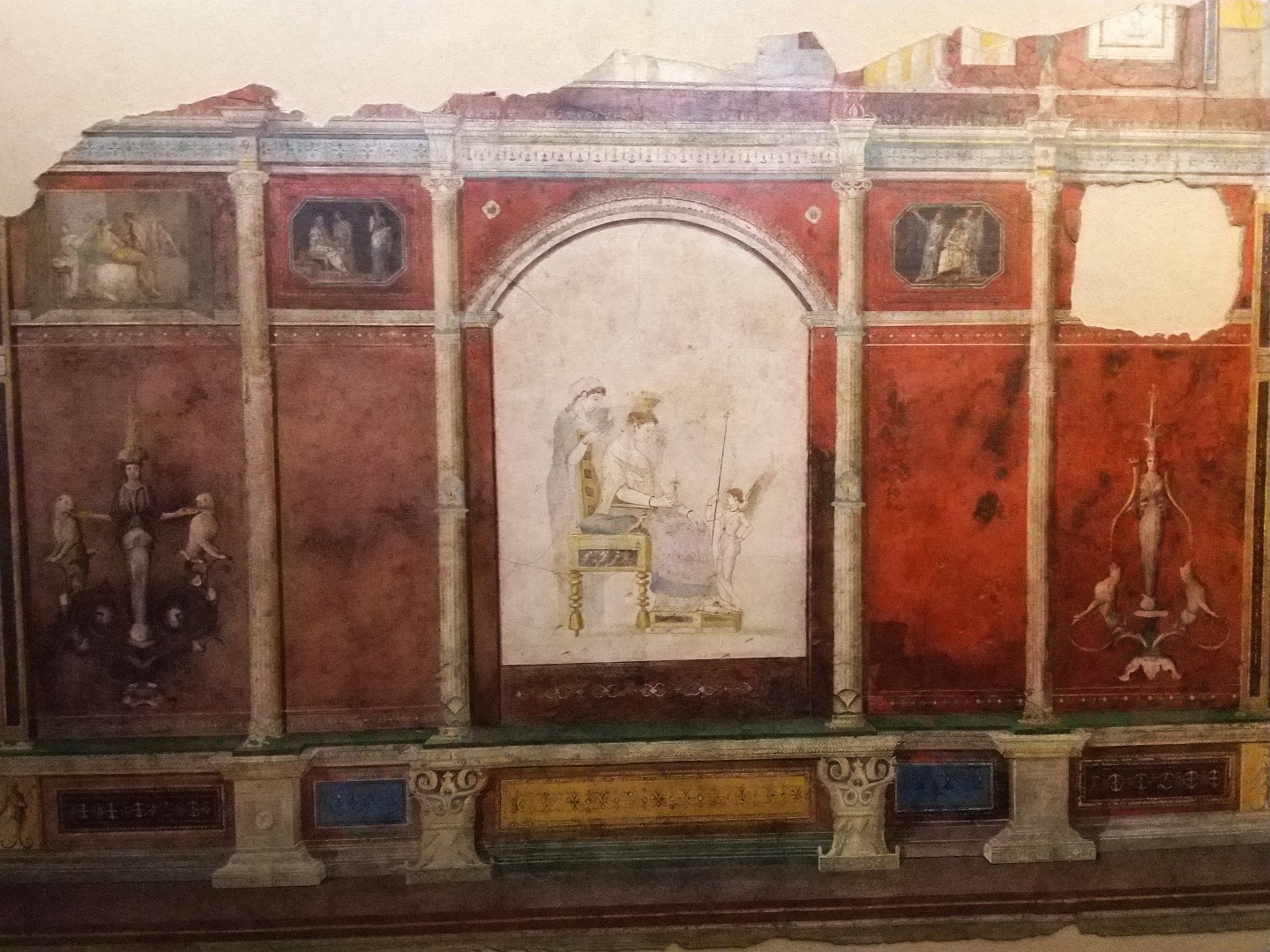
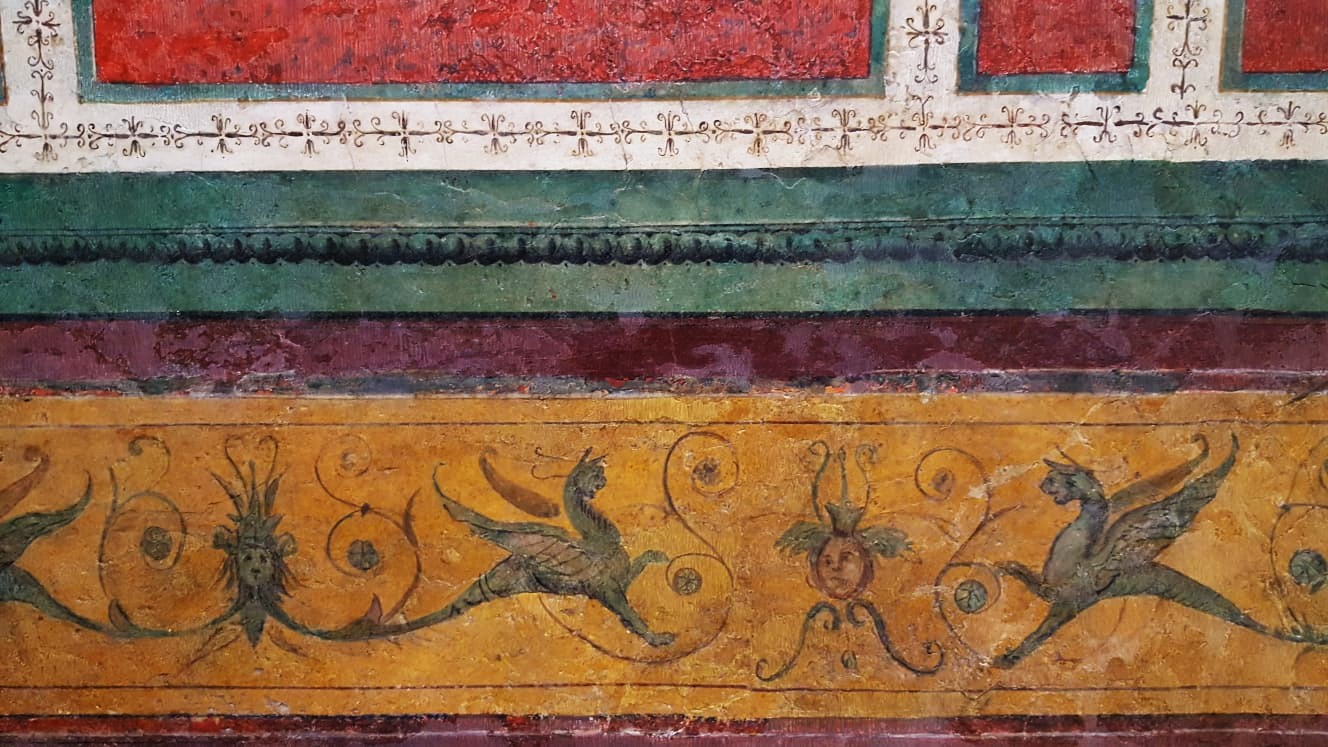
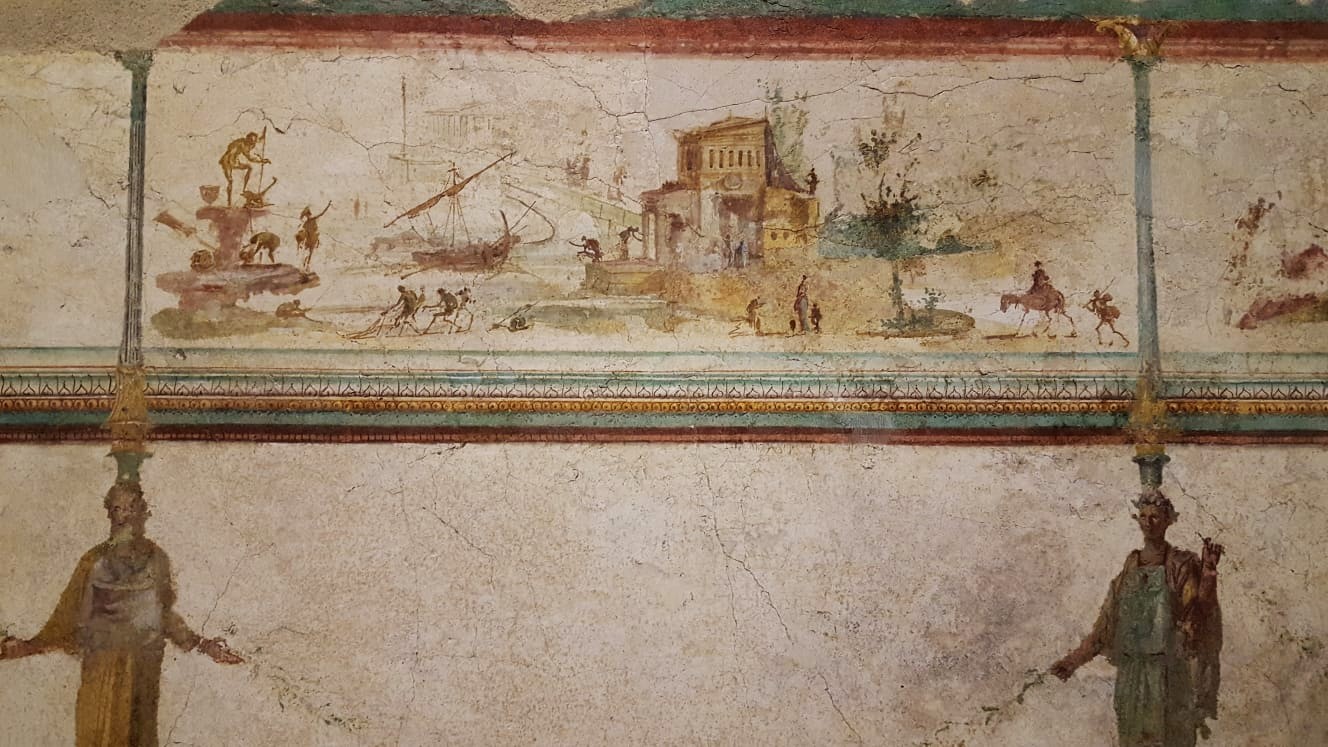
Impressive as they are, those frescoes were not the high point of our visit to the Palazzo Massimo.
When I was at university two of my favourite books were I, Claudius and Claudius the God by Robert Graves. I remember devouring them when I should have been wading through my set texts. Graves’s story is not short of villains, but surely the worst is the evil, scheming, murdering Empress Livia, the wife of Augustus and grandmother of Claudius. Then a couple of years later we were treated to the superb BBC adaptation with Derek Jacobi in the title role, and many other brilliant actors. One of the best of them was Siân Phillips as Livia, who demonstrated the truth of the old theatrical adage that it is more fun to play villains than heroes.
Graves was a highly educated man who based his historical novels on classical sources – ancient historians like Suetonius who inevitably had their own axes to grind. Needless to say there are modern historians who advance plausible arguments as to why Livia probably wasn’t as bad as she is made out to be by those sources. One such article is here.
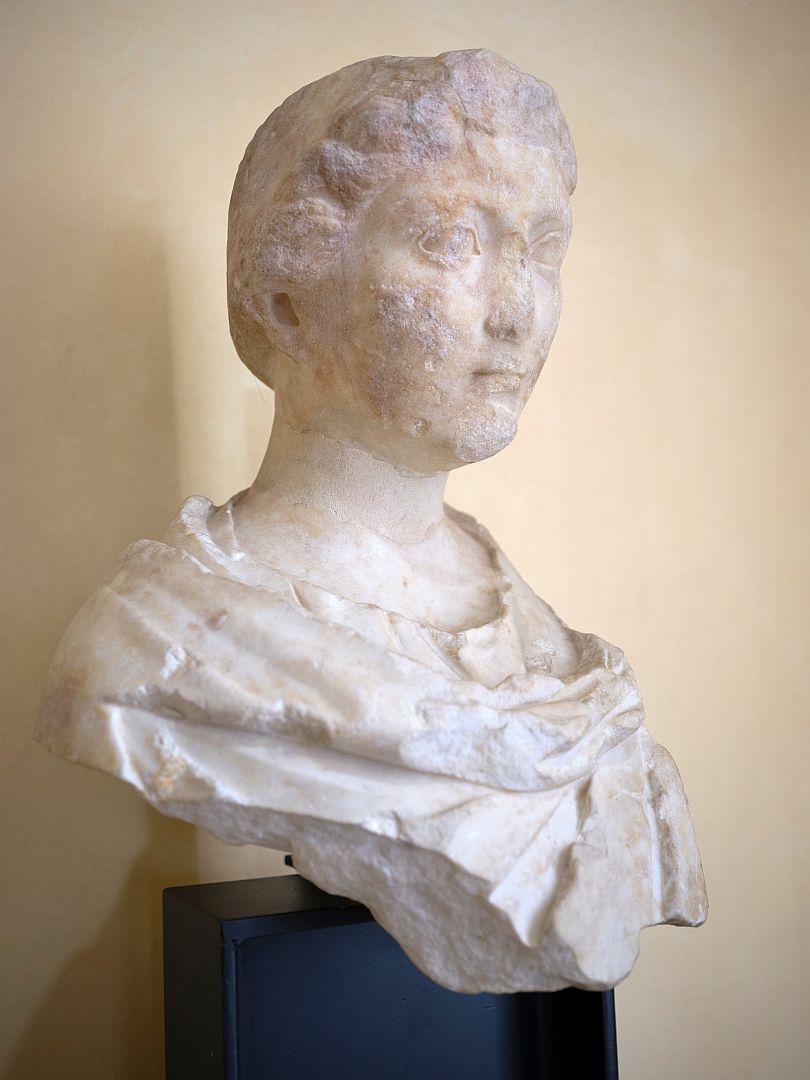
Of course historical fiction needs villains and heroes and it would not have made such a good story otherwise. I note that Graves’s other great villainess, the Empress Theodora from Count Belisarius, had a similarly bad rap from contemporary sources, but both she and Livia still sound pretty scary. Theodora looks scary too, in the mosaic portrait from Ravenna. Something else for the list of future posts (edit: I have now posted on Ravenna and Theodora).
Livia Drusilla was a wealthy aristocrat and had property of her own before she married Augustus (her second husband), including a country villa. It was a few miles north of Rome on the Via Flaminia, on a hill looking back down the Tiber towards the city. The villa was rediscovered in the 16th Century, but not recognised as the Villa of Livia and properly excavated until the 1860s. These days the site lies near the flyovers of the junction between the Rome Ring Road and the Strada Statale 3 (SS3), the latter still called – bless the Italian Ministry of Transport – the Via Flaminia.
One room, south-facing and thus probably intended for use in winter, was decorated with beautifully realistic frescoes of trees and birds. A fresh breeze agitates the leaves and birds fly to and fro. These frescoes, after cleaning and restoration, were moved to the Palazzo Massimo where they are on display in a room of the same size as the original. If there were nothing else in the museum, I would recommend you go there and see them. We will definitely go there again.
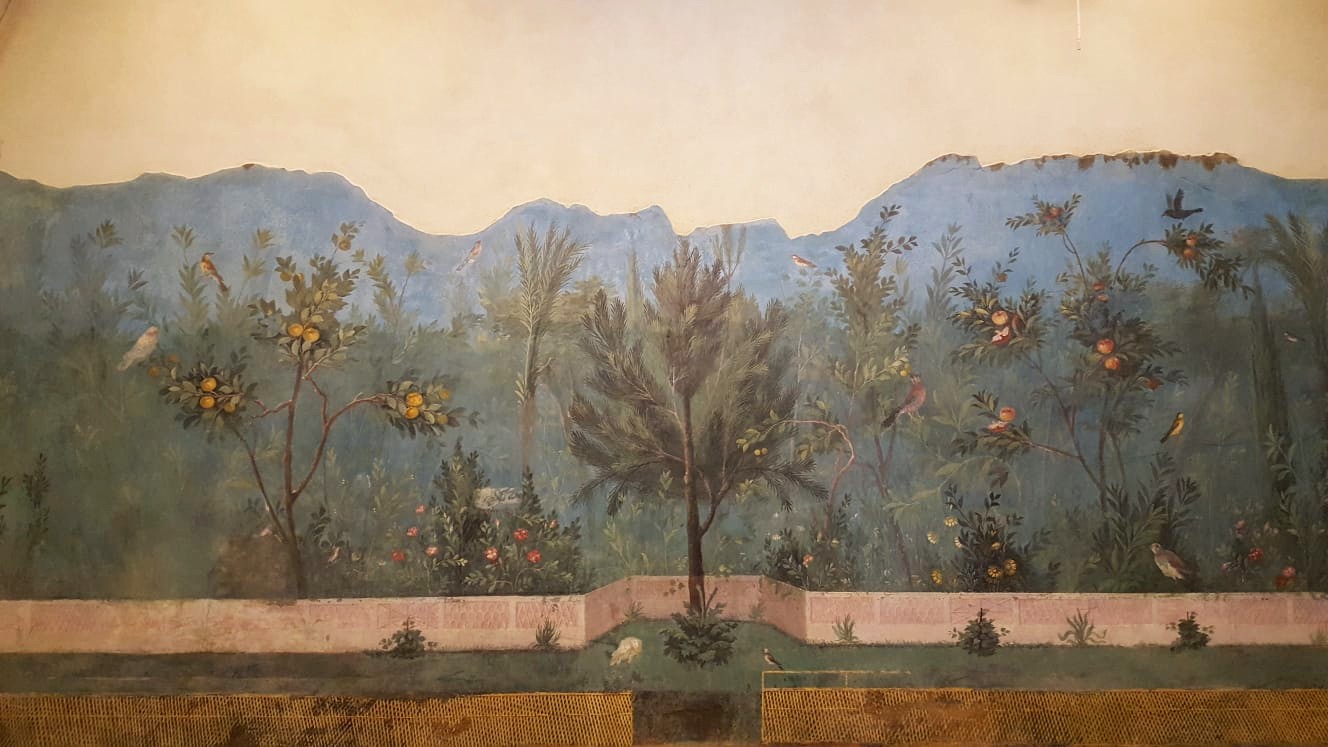
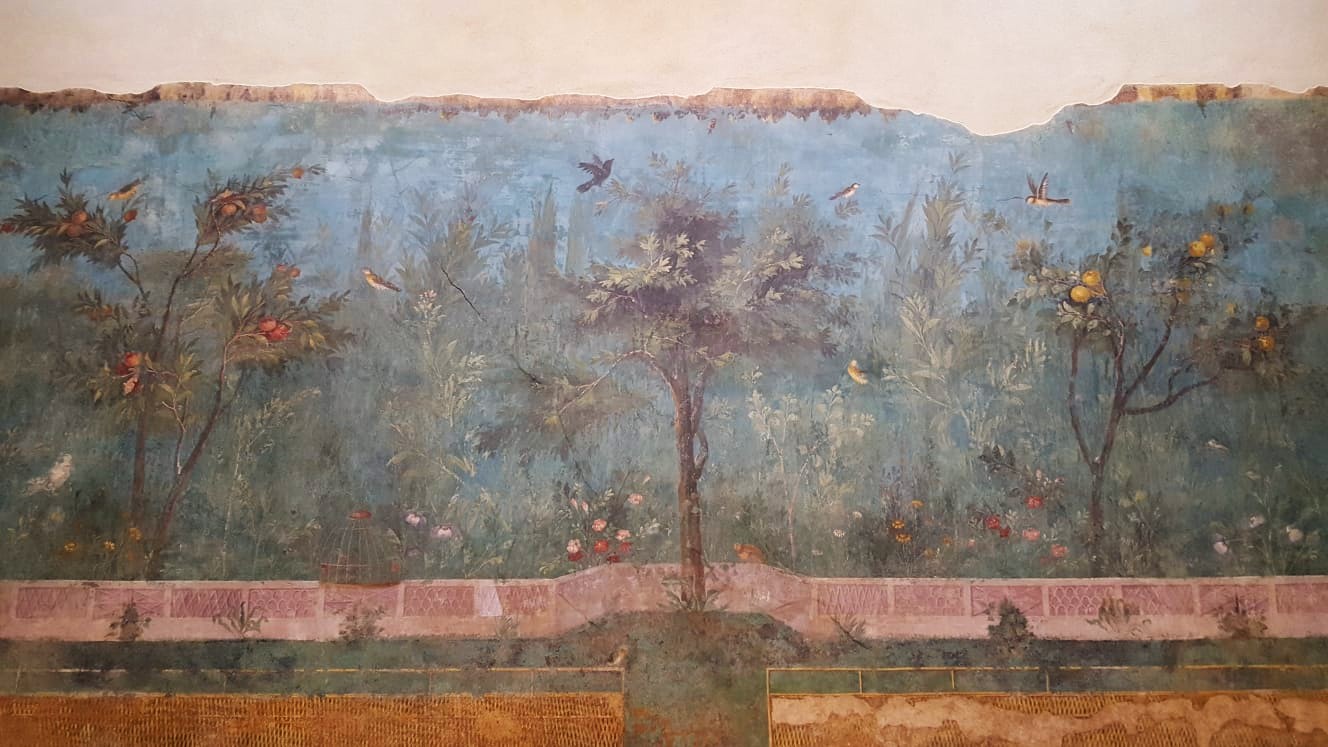
Not only are they beautiful, but it is almost certain that those actual frescoes were looked upon by Livia and Augustus. They could have strolled about in front of them discussing affairs of state. If you believe Graves’s depiction of Livia, she might have despatched her poisoners from there.
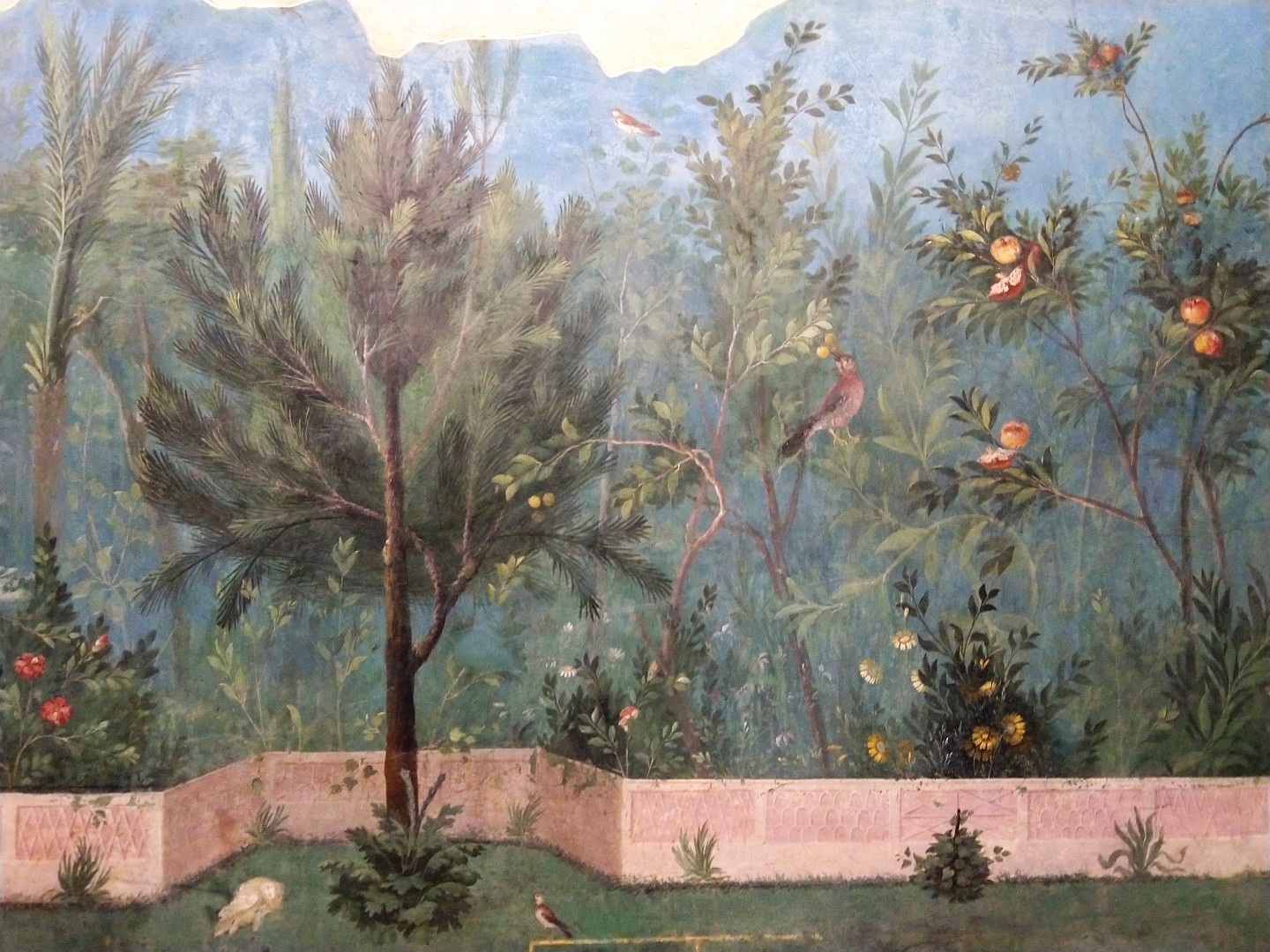
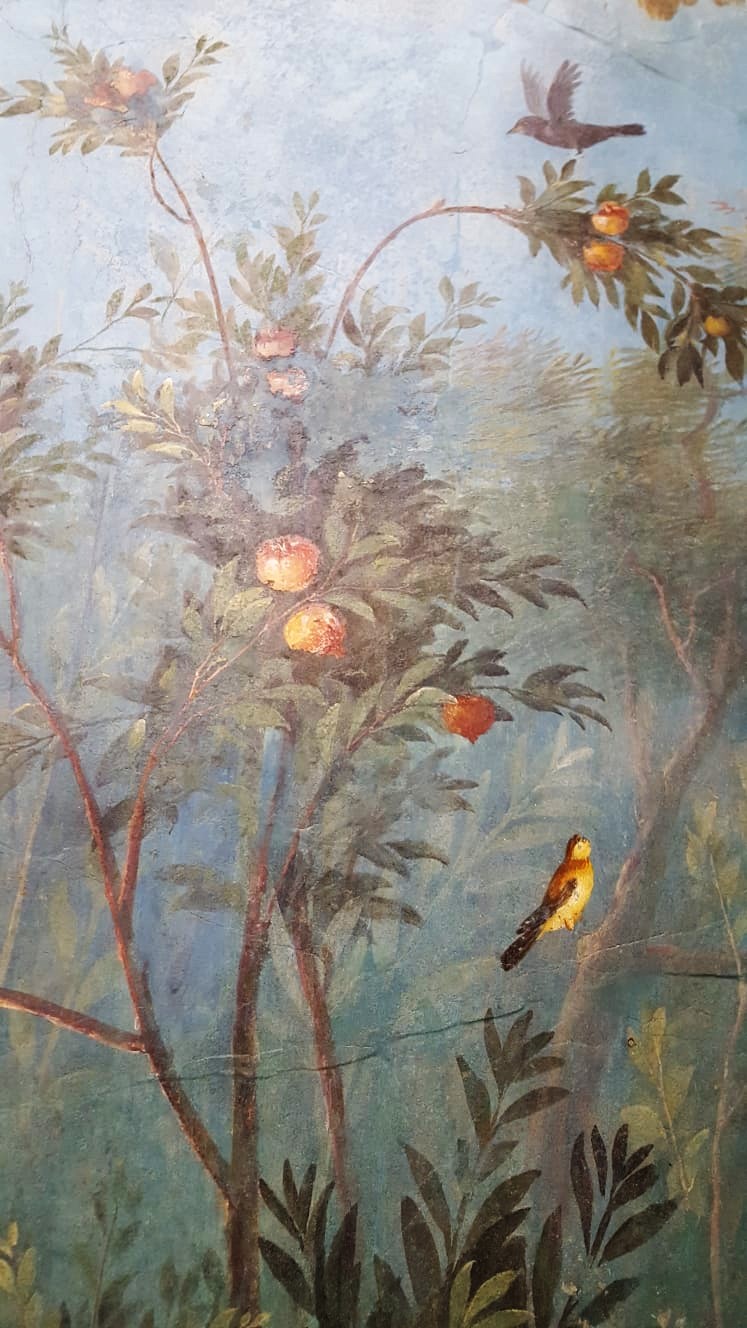
We got to the museum relatively early and had the luxury of a period alone in Livia’s garden, and a relatively undisturbed visit to the rest of the exhibits. Then, around mid-morning, that scourge of Italian museums arrived, in the form of several school groups. The younger children did at least seem to be partly listening to their teacher. The adolescents behaved as they always do – after fanning out to occupy every single seat in the place, they then stared at social media on their smartphones, while ignoring everything the teacher was saying. At least it keeps them quiet, I suppose. Doubtless when the time comes to write a report on their visit, they will use those same smartphones to share material cut and pasted from Wikipedia.
In my post on The Paradox of Old and New Italy I criticised the implicit attitude of Grand Tourists of the 18th and 19th Centuries that “Italy is wasted on the Italians”. Nevertheless, it is a bit depressing to see young people so determinedly impervious to their own culture. Hopefully it’s just a phase they are going through.
Update: we revisited the museum in August 2024 and I wrote a separate post on the subject.

6 Replies to “The Garden of Livia Drusilla”